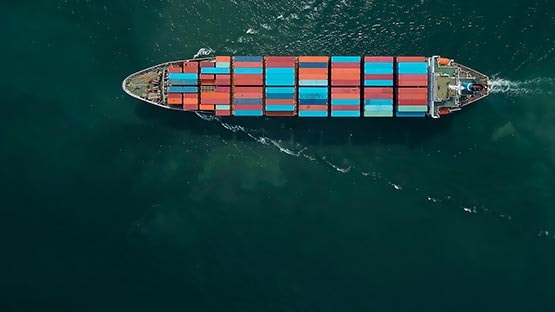
Application of VAT zero rate for supplies of and services to sea-going vessels changed
26/11/18
On 20 November 2018, the State Secretary of Finance published the long-awaited amendment to the explanation of the VAT zero rate for seagoing vessels and aircrafts. As of 1 January 2019, a seagoing vessel is only deemed to be a seagoing vessel if it is operated for at least 70% for navigation on the high seas and 100% commercially. Only then can the zero VAT rate be applied to the supply and bunkering of seagoing vessels.
The Decree addresses the definition of a seagoing vessel. It also explains, among other things, how it can be demonstrated that the vessel is used at least 70% for navigation on the high seas and explains the condition of full (100%) commercial operation.
For the maritime sector, this decision means that suppliers and operators will have to identify sea-going vessels for which the zero rate can be applied as of 1 January 2019. Suppliers of goods and services may use the IMO number on their invoices but should also have a statement from the operator that the above mentioned criteria have been fulfilled. In order to comply with these amended rules as per 1 January 2019, suppliers and operators will have to adapt their ERP systems and processes/procedures in this respect.

Reason for amendment
At present, the exemption with credit (designed in the Netherlands as the VAT zero rate) is linked to so-called 'seagoing vessels'. It is not required that these seagoing vessels are actually used for 'navigation on the high seas', but rather that they are fit to do so. However, the European Commission has indicated that this provision is formulated too broadly. On the basis of this information, the scope of the zero VAT rate for sea-going vessels is narrowed.
Regulations as of 1 January 2019
As a result, as of 1 January 2019, the zero rate will no longer apply to the supply of vessels and services to vessels operating for less than 70% outside the 'nautical twelve-mile zone'. According to the new regulation, in such a situation the qualification as a sea-going vessel will no longer be met. This will apply e.g. to certain ferry services, tugs or commercially operated yachts. In future, 21% VAT will need to be charged instead of applying the 0% VAT rate.
The Deputy Finance Secretary has now provided guidelines outlining the amended policy.
Closer look new regulations
Demonstrating zero rate
In order to prove that the vessel is seagoing, it is sufficient for the operator concerned to state the IMO number on the invoice. For vessels that do not have such a number, the business who wants to apply the zero rate may also prove in another way that the vessel is suitable for navigation on the high seas. An example of this is the certificate of registry.
Furthermore, the business needs a statement from the operator that the 70% criterion has been met and that the ship is used 100% commercially.
Scope phrase ‘seagoing’
Vessels used in the offshore industry can also qualify as seagoing vessels. Examples include floating drilling platforms that can or cannot be placed on the seabed, dredgers, pontoons and ships that lay cables or pipelines on the sea bottom. 'Seagoing' includes all parts of the sea that do not belong to the territorial waters or the inland waters of the Netherlands.
70% requirement
The 70% criterion introduced can be demonstrated in several ways. In principle, the statement of the operator is followed (for both ships with and without a known history of operation). For ships with a known history of operation, the operator may use one of the following methods: the distance sailed, the number of voyages, sailing/operating time or a weighted average for a period of five years according to any of these methods.
Statement
The statement is free of form but should state who the ship's operator is, whether or not the ship has a known history of operation, the year to which it relates and the method of calculation used to calculate the 70% criterion.
Exception
Lifeboats and assistance vessels are not be subject to the condition of use as seagoing vessels. For this category it is sufficient that the use of these vessels takes place entirely or almost entirely (for at least 90%) at sea (whether or not within the territorial waters). The lease of pleasure yachts to end-users does not fall within scope of the zero percent VAT rate.
Contact us

















